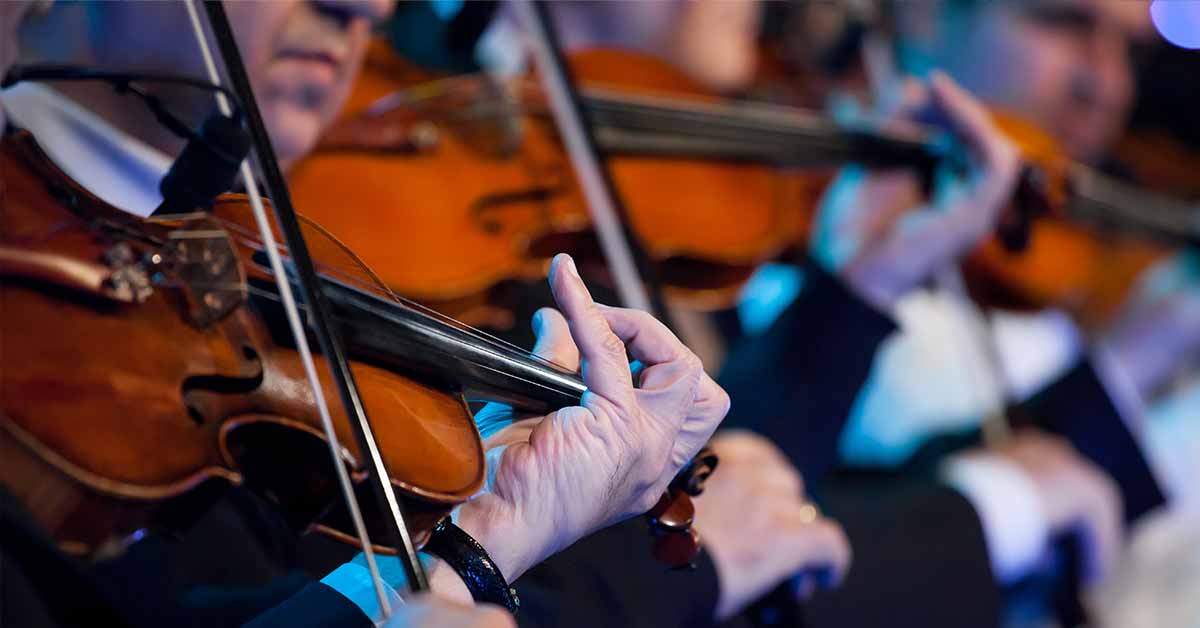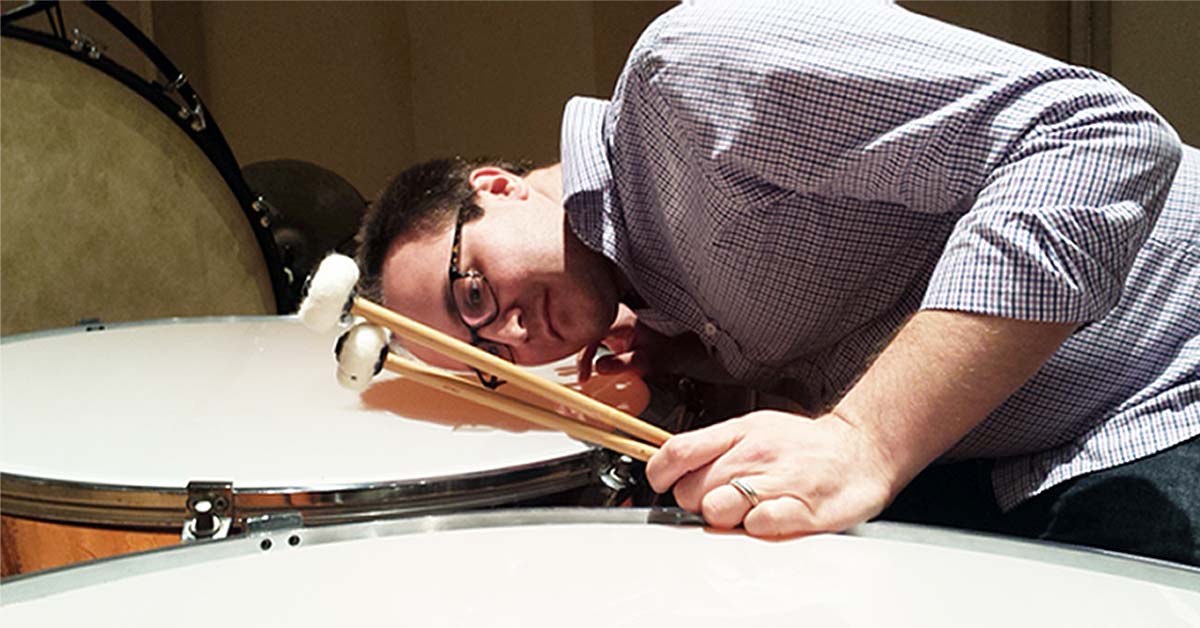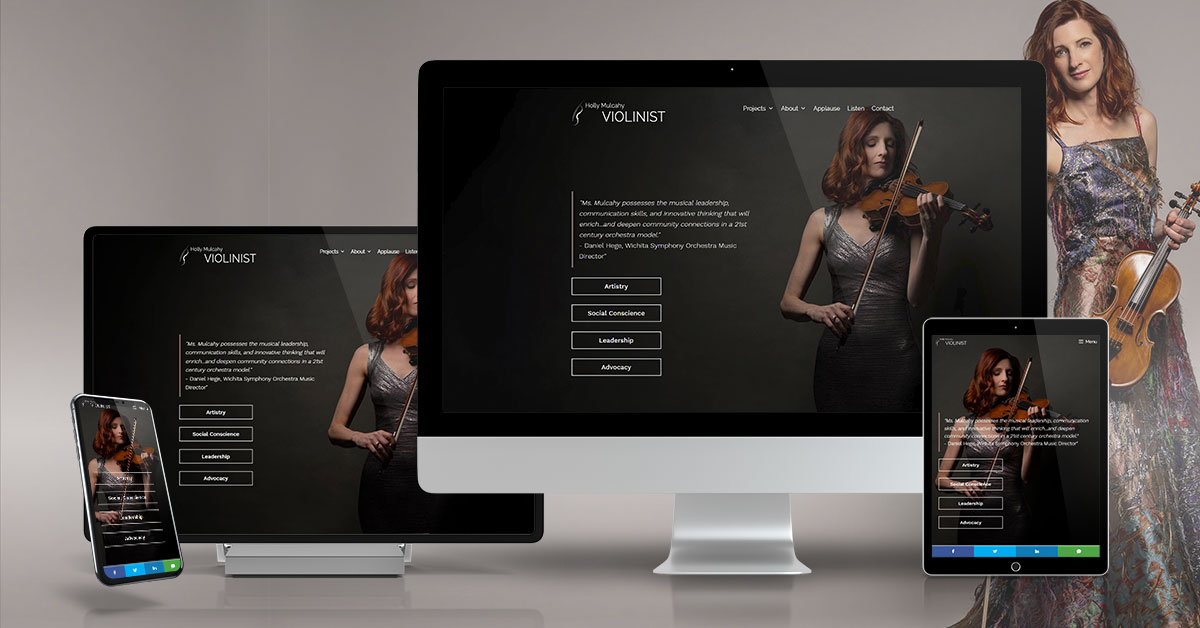In the orchestra field we don’t do a fantastic job of creating or encouraging a dialog between patrons and the orchestra. Our focus is mainly on delivering. We deliver talks and lectures, program notes, concerts, and then we ask for money.
The point of music, and all art for that matter, is for people to experience emotions or thoughts connected with the work. Since everyone is different, emotional responses vary. And that’s a good thing! What is not good is to try to pigeonhole someone into a certain way of thinking and then point out when they are “wrong.”
I have seen it time and time again a patron who will say an orchestral work reminds them of XYZ and an expert will correct them to say, “Actually…the piece was written about ABC.” This is not listening, this is explaining. Some people like to be told what to think, but art shouldn’t always have concrete answers. Part of the experience of art is to cultivate curiosity and creativity which helps us grow as human beings. And the conversations that follow those interactions are golden.
Creativity is not always encouraged though. Brene Brown has a wonderful book about vulnerability and uses a term in that book that I think is applicable. Art Scars, Brene says, are created in our developmental years at or around 4th grade. This is when we start comparing our creativity to others. The result is triggers of shame and vulnerability. Brene says:
The shame trigger and vulnerability shield that emerge, that keeps us from being creative, is comparison. We’re all creative. Creativity is a function of being human. Unused creativity is not benign. It doesn’t dissipate. It metastasizes. Unused creativity turns into rage, grief, shame….Inside of all of us is creativity. One of the big reasons that we stop using creativity is comparison. I found that 85% of the men and women I interviewed remembered an event in school that was so shaming, it changed how they thought of themselves for the rest of their lives…half of those people had a shaming experience around creativity, they have “art scars.” They can point to a specific time where they were laughed at.
Perhaps the explanation Brene shares is one of the reasons people decide not to share or speak up. But it doesn’t help when people aren’t engaged or encouraged to share their impressions.
The most striking thing I’ve experience when taking music into Walker State Faith and Character Based Prison is the very direct two-way conversation. After each piece is performed, a direct talkback about that work is opened up. The composers and musicians I bring in for these recitals are encouraged to put aside their instincts to explain the music and listen to the impressions from the prisoners first.
To the prisoners I mention that there are no wrong answers and every opinion matter. Prisoners share freely what they felt or heard without any shame or concern that their impressions might be “wrong.” They also mention in their surveys that they find it interesting to listen to others’ opinions as they are similar to theirs, or different enough that it gave a point of view they will now consider.
I asked one of the volunteer prison mentors, who visits weekly, about how this culture of sharing so freely without concern of comparison came about. He said: “It is a very intentional culture in a very special prison.” From the moment men arrive at the prison, they are mentored and guided. At first, they are mentored by veteran prisoners, and then members from the community. There is a very decisive way to build up confidence and to feel the support. So, sharing feelings and thoughts about a piece of art or music becomes second nature as that skill is nurtured.
The guests that I have been allowed to bring into the prison for these recitals remark that they have never experienced music like this. They say that hearing without restrictions broadened their own experience and that hearing others’ impressions also enhanced the performance. One guest told me it forever changed how he listens to the symphony concerts he goes to regularly. He said he’s more aware and observant to his emotions and felt freer with his imagination. It had never occurred to him to explore music in such an open and unlimited manner.
It’s no wonder that people might not feel welcome to let their minds or imaginations go into a creative space while experiencing music or art. Instead, people are instructed how to properly enjoy something. While that can be interesting and helpful to enjoy a performance, it’s time that artistic organizations encourage emotional and creative freedom as well.
A good way to do this is to have post-concert chats. Many playhouses and theaters have “Talk Backs” after a play to discuss the issues or story in the play. It really is quite a powerful, yet simple, concept. Listen to the audience members’ impressions and let them talk about their experience. It doesn’t have to be long, and even post-concert wine could be served. I would recommend a moderator of sorts though, to help keep the conversation geared toward people’s discovery during a concert, not people’s human nature of trying to show off how much they already know.
One excellent thing that’s happening at the Wichita Symphony is the Sound Post page. Like a book club, a monthly offering of music is put into cyber space for an open online discussion.
So far there have been several private messages from people sharing thoughts about the offerings, usually with a note saying, “I wasn’t sure if this was a good response to the piece you offered, but…”
We’ll keep encouraging people to share their opinions and thoughts; it really is rewarding. I do think it is something the arts everywhere need to actively try….and one thing the Wichita Symphony is trail blazing.
For now, the field needs to ask itself: Are we really hearing and listening to our patrons? Did we even ask what they thought? Little by little, we need to create a more inclusive atmosphere to the art and music we create.











The worst to me in introductions before a concert (with the best of intentions, always, I am sure):
“As you know….”
Makes me angry because: I don’t know. That’s why I’m there, to learn, and not about my deficits!
You are absolutely right–pre-concert talks by musicologist types (“listen for the key change in measure XX”–while the audience gives blank looks or falls asleep) are deadly. The music should take each audience member wherever it takes them — the audience shouldn’t be told to “listen for this or that”, because then they are concentrating on what they were told to listen for rather than letting the music speak to them (and they feel frustrated if they couldn’t hear what they were told to hear). Also, most audience members like stories–they would like to hear the story of why the composer wrote this piece, or the historical context, or what was going on in the composer’s life at this point that prompted the composition. But pre-concert talks are usually a monologue, not a dialogue, and you also identify one barrier: how to keep a dialogue under control so the experts or pseudo-experts in the audience who like to talk and demonstrate their erudition don’t take over the dialogue. This phenomenon keeps the non-experts who are shyer from participating at all, which defeats the purpose of the dialogue. Perhaps pre-concert talks should be bifurcated–one session presented by the musicologist or music historian for the “advanced” audience members, and the engaging storyteller for the non-advanced audience members.